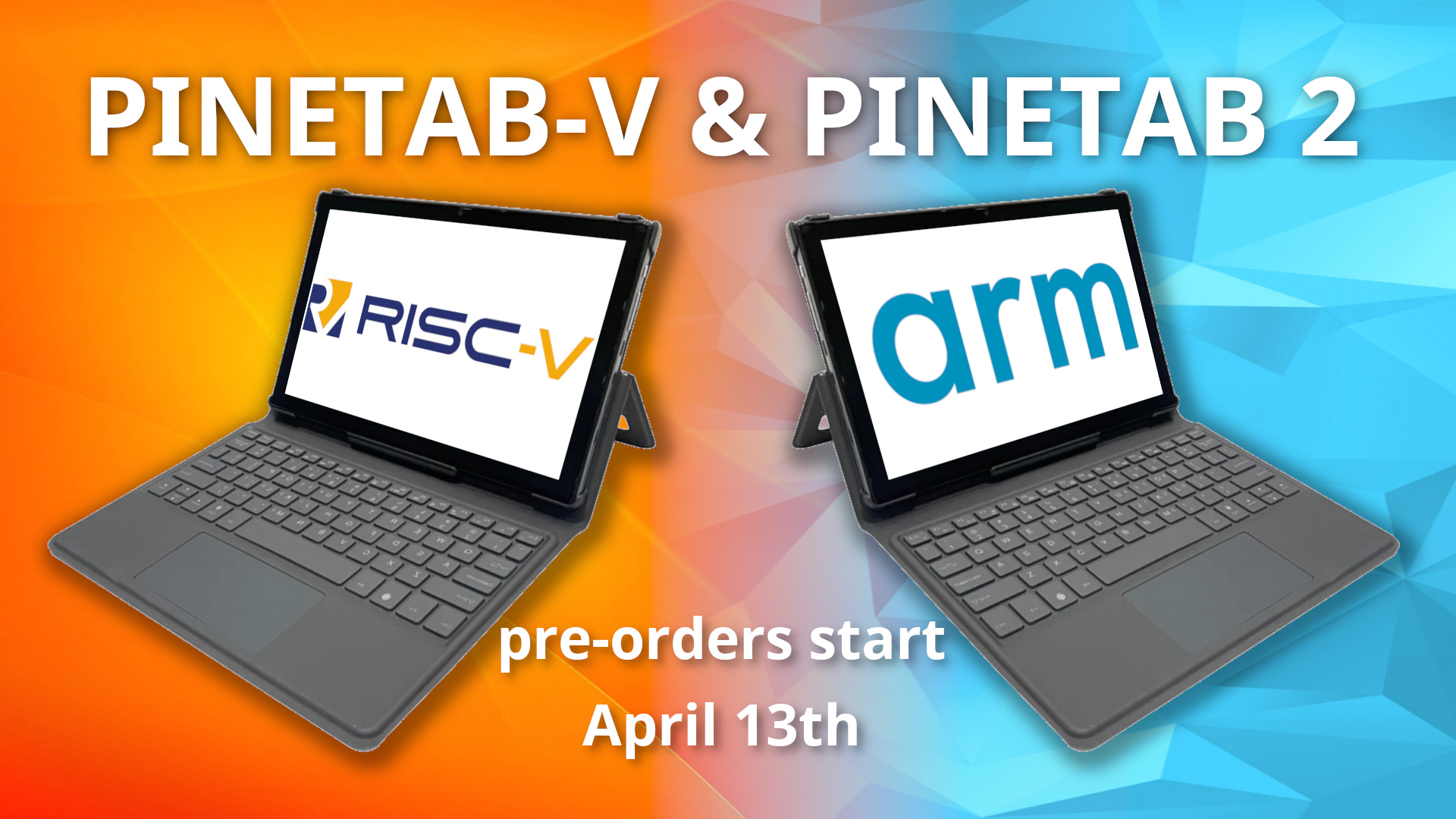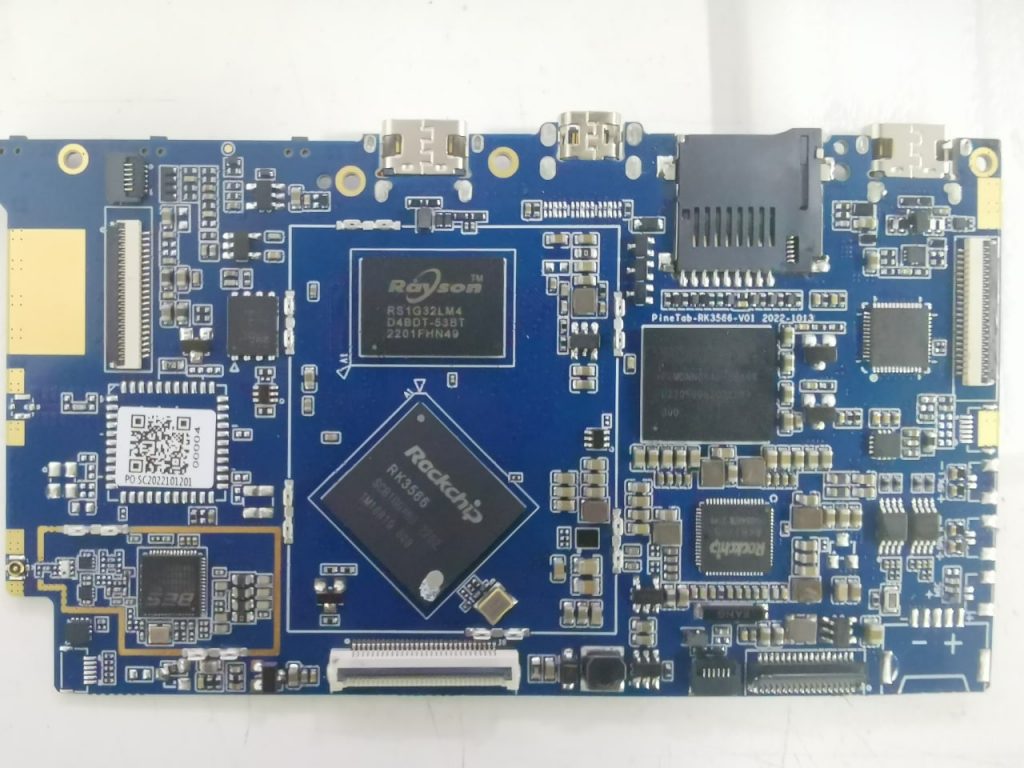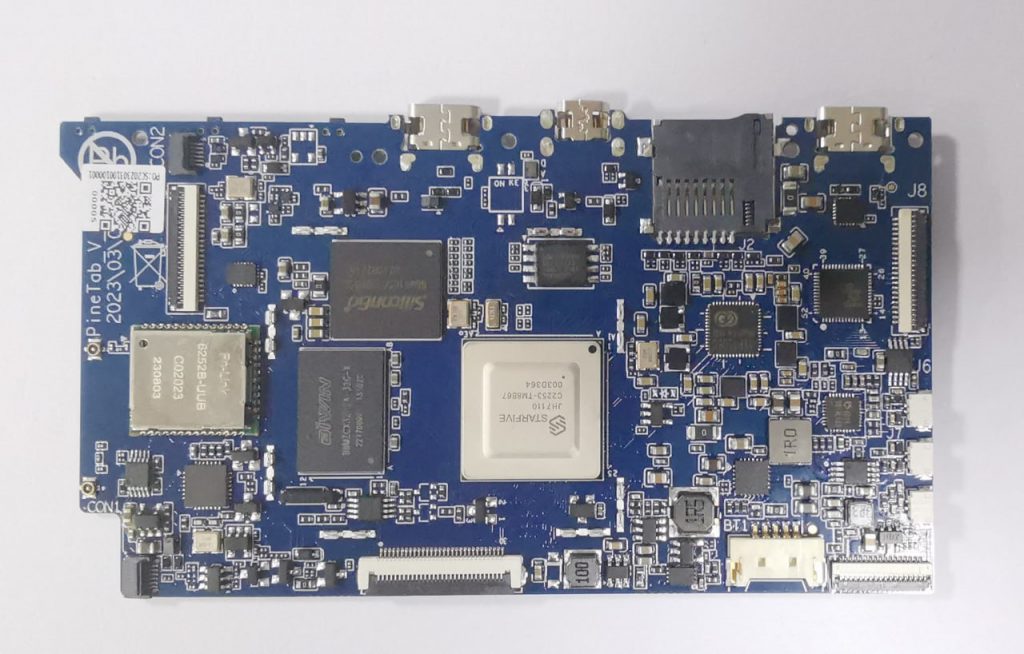PineTab-V and PineTab2 launch

The PineTab2 and PineTab-V pre-orders begin on April 13th. Both tablets feature a 1200x800 10.1” IPS LCD panel with wide viewing angles, a sturdy metal metal chassis, two USB-C ports (1x USB 3.0, 1x USB 2.0 with charging), a digital video out port, a front 2MPx and rear 5MPx camera as well as a 6000mAh battery. Both come bundled with a magnetically fitted detachable backlit keyboard (connecting via pogo pins using USB 2.0 protocol) that doubles up as a carry case, and are available in two hardware configurations: 4GB LPDDR4 RAM / 64GB eMMC 5.1 flash storage and 8GB LPDDR4 RAM / 128GB eMMC 5.1 flash storage. Finally the PineTab2 and PineTab-V both start at $159.
On the outside the only thing that differentiates the two devices is the color of the chassis: the PineTab-V is deep matte black while PineTab2 is silver-gray. But the real difference between the two resides on the inside. The PineTab2 features the well supported RK3566 64-bit Arm SoC, which has been a part of our line-up for over a year, and the tablet ships with a build of DanctNix Arch Linux for Arm. The software can be best described as early but very serviceable, and there is little doubt that before long improvements will be made and additional functionality enabled. Like the PinePhone and PinePhone Pro before it, the PineTab2 will reach a high degree of functionality in time and make for a great work or entertainment travel companion.


First image: PineTab2 PCB with RK3566. Second image: PineTab-V with JH7110
Unlike the PineTab2, the PineTab-V is based on the JH7110 64-bit RISC-V SoC. In late 2022 we announced our plans to help grow the RISC-V hardware ecosystem alongside our existing Arm-based device line-up (see 2023 Sneak Peek section in December Community Update) – to this end the PineTab-V is to the Star64 single board computer released earlier this month what the PineTab2 is to the Quartz64. The JH7110 RISC-V SoC, and the RISC-V architecture in more general, is currently best described as having limited Linux support. The PineTab-V is therefore an experimental device, which ships without an OS and without any promises. You can think of it as a convenient development platform targeted at those of you interested in bringing Linux support to JH7110 and, by extension, the entire RISC-V ecosystem.
To sum it up, the two tablets launching on April 11 look near-identical but in actuality are very different devices. The PineTab2 is Arm-based, ships with working software, has solid Linux support that will only get better with time, and has an already-established community of developers waiting for their units to arrive. The PineTab-V is built upon a RISC-V SoC and holds much promise but comes without working software. The PineTab-V is an experimental device geared towards developers and those who wish to explore the architecture. The open source community surrounding RISC-V is just taking shape and still growing, and we hope that the PineTab-V will further solidify this community and help accelerate development.
* PineTab2 and PineTab-V pre-orders will be available under the ‘Tablets’ category (drop-down) starting Thursday, April 13th


